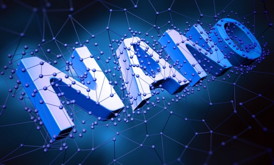Home > Press > Joint international research project leads to a breakthrough in terahertz spectroscopy
 |
Abstract:
Although terahertz spectroscopy has great potential, especially for environmental monitoring and security screening applications, it previously could not be used effectively to study nanocrystals or molecules at extremely low concentrations. An international team led by Professor Luca Razzari at the INRS Énergie Matériaux Télécommunications Research Centre has found a solution to this problem by increasing the technique's sensitivity using metallic nanostructures, as explained in an article published in Nano Letters in January 2015.
Joint international research project leads to a breakthrough in terahertz spectroscopy
Québec, Canada | Posted on January 28th, 2015Terahertz rays (T-rays) have special properties that are very useful in identifying complex molecules and nanomaterials. However, the very long wavelength associated with this kind of radiation significantly hinders its interaction with nano-objects such as nanoparticles, nanorods, and nanotubes, or large molecules of biological interest. To overcome this limitation, the researchers used nanoantennas to reinforce terahertz spectroscopy, building on an existing strategy that has been successfully employed for other applications such as surface-enhanced Raman spectroscopy (SERS).
The researchers demonstrated that it is possible to retrieve the spectroscopic signature of a single layer of semi-conductor nanocrystals and increase their absorption by more than a million times when they are placed in the antennas' nanocavities. The unique method they developed to squeeze terahertz light into nanovolumes opens up new research perspectives in nanophotonics and broadens the field of applications in both spectroscopy and nonlinear optics.
####
About INRS
Institut national de recherche scientifique (INRS) is a graduate-level research and training university and ranks first in Canada for research intensity (average grant funding per faculty member). INRS brings together some 150 professors as well as 700 students and postdoctoral fellows at its four centres in Montreal, Quebec City, Laval, and Varennes. Its applied and fundamental research is essential to the advancement of science in Quebec and internationally even as it plays a key role in the development of concrete solutions to the problems faced by our society.
For more information, please click here
Contacts:
Gisèle Bolduc
418-654-2501
Copyright © INRS
If you have a comment, please Contact us.Issuers of news releases, not 7th Wave, Inc. or Nanotechnology Now, are solely responsible for the accuracy of the content.
| Related Links |
| Related News Press |
News and information
![]() Researchers develop molecular qubits that communicate at telecom frequencies October 3rd, 2025
Researchers develop molecular qubits that communicate at telecom frequencies October 3rd, 2025
![]() Next-generation quantum communication October 3rd, 2025
Next-generation quantum communication October 3rd, 2025
![]() "Nanoreactor" cage uses visible light for catalytic and ultra-selective cross-cycloadditions October 3rd, 2025
"Nanoreactor" cage uses visible light for catalytic and ultra-selective cross-cycloadditions October 3rd, 2025
Discoveries
![]() Researchers develop molecular qubits that communicate at telecom frequencies October 3rd, 2025
Researchers develop molecular qubits that communicate at telecom frequencies October 3rd, 2025
![]() Next-generation quantum communication October 3rd, 2025
Next-generation quantum communication October 3rd, 2025
![]() "Nanoreactor" cage uses visible light for catalytic and ultra-selective cross-cycloadditions October 3rd, 2025
"Nanoreactor" cage uses visible light for catalytic and ultra-selective cross-cycloadditions October 3rd, 2025
Announcements
![]() Rice membrane extracts lithium from brines with greater speed, less waste October 3rd, 2025
Rice membrane extracts lithium from brines with greater speed, less waste October 3rd, 2025
![]() Researchers develop molecular qubits that communicate at telecom frequencies October 3rd, 2025
Researchers develop molecular qubits that communicate at telecom frequencies October 3rd, 2025
![]() Next-generation quantum communication October 3rd, 2025
Next-generation quantum communication October 3rd, 2025
![]() "Nanoreactor" cage uses visible light for catalytic and ultra-selective cross-cycloadditions October 3rd, 2025
"Nanoreactor" cage uses visible light for catalytic and ultra-selective cross-cycloadditions October 3rd, 2025
Interviews/Book Reviews/Essays/Reports/Podcasts/Journals/White papers/Posters
![]() Spinel-type sulfide semiconductors to operate the next-generation LEDs and solar cells For solar-cell absorbers and green-LED source October 3rd, 2025
Spinel-type sulfide semiconductors to operate the next-generation LEDs and solar cells For solar-cell absorbers and green-LED source October 3rd, 2025
![]() Rice membrane extracts lithium from brines with greater speed, less waste October 3rd, 2025
Rice membrane extracts lithium from brines with greater speed, less waste October 3rd, 2025
Tools
![]() Japan launches fully domestically produced quantum computer: Expo visitors to experience quantum computing firsthand August 8th, 2025
Japan launches fully domestically produced quantum computer: Expo visitors to experience quantum computing firsthand August 8th, 2025
![]() Rice researchers harness gravity to create low-cost device for rapid cell analysis February 28th, 2025
Rice researchers harness gravity to create low-cost device for rapid cell analysis February 28th, 2025
|
|
||
|
|
||
| The latest news from around the world, FREE | ||
|
|
||
|
|
||
| Premium Products | ||
|
|
||
|
Only the news you want to read!
Learn More |
||
|
|
||
|
Full-service, expert consulting
Learn More |
||
|
|
||








